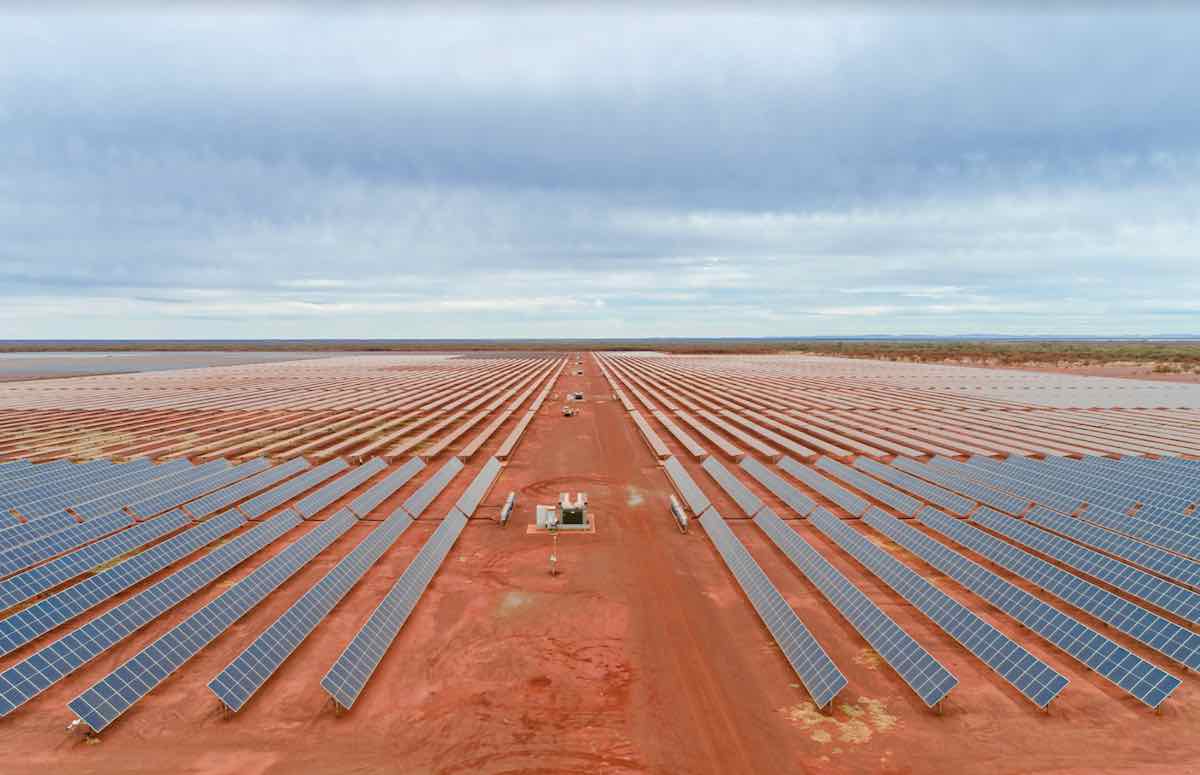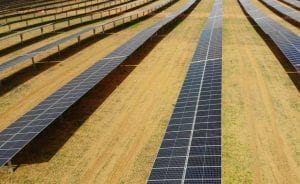Gina Rinehart, Australia’s richest person, may not be a fan of renewable energy – she describes solar as an “eye sore”, but her private company is now planning to build a major solar farm to help power a big new iron ore project on the family’s historic pastoral property.
The addition of the solar farm is revealed in a revised application for the Mulga Downs iron ore project in the Pilbara to the state’s Environment Protection Authority.
As has been widely reported elsewhere, the new plans will see the scale of Mulga Downs – to be built on the pastoral property where Rinehart spent much of her childhood – downsized considerably, seeking to produce 40 per cent less iron ore than previously expected, and reducing the amount of groundwater to be extracted.
Included in the proposal is a solar farm to help power the mine. “Greenhouse gas emissions are likely to decrease with the addition of the solar farm and associated ancillary infrastructure,” the new application says. Rinehart has previously described climate science as propaganda.
There are no further details about the size of the proposed solar farm. Renew Economy has reached out to Hancock Prospecting to seek further information.
Rinehart’s Roy Hill iron ore mine has previously flagged plans to build a 30MW solar farm to cut emissions at that project, but we have been unable to establish if that went ahead.
Rinehart has been a strident critic of renewables in general, and is no fan of solar. Last year she described solar farms as an “eye sore” that should only be installed in “city parks and rivers” rather than rural areas.
She resumed her attack on renewables during the Daily Telegraph-hosted Bush Summit her companies sponsored that toured Australia a few months ago. At the event in Port Hedland, she said:
“The so-called sustainable energy can’t underpin our baseload power requirements. The sun doesn’t always shine. The wind doesn’t always blow. The additional capital to try and hook this up will be humongous.”
Solar farms, however, have proven popular for mining companies, including her iron ore peers in the Pilbara who are looking to move away from expensive and polluting fossil fuels and switch their energy sources to wind, solar and battery storage – part of a hugely ambitious plan to decarbonise the Pilbara mining province.
Her great rival, Andrew Forrest, is aiming for “real zero” terrestrial emissions at Fortescue iron ore mines by 2030, which means no burning of gas or diesel for either power generation or transport and mining equipment. His company has recently placed a $4 billion order for hundreds of electric haul trucks, dozers and excavators.
Forrest is already using solar from the Chichester solar farm and has recently completed construction of the 100 MW North Star solar project.
Rio has built one small 34 MW solar project at Gudai-Darri, and plans another 80 MW solar farm in Pilbara, and another 1.1 GW solar farm in Queensland to help power its energy hungry smelters and refineries in that state. Both it and BHP are contemplating more solar and wind projects to help power their huge iron ore mines in the Pilbara.








